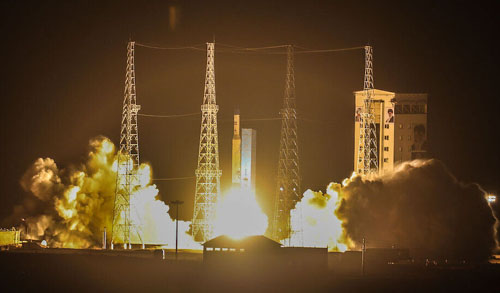FPI / February 11, 2020
Iran’s Zafar satellite failed to enter orbit on Sunday and crashed in a rural area in the country’s southeast. It was the fourth failed satellite launch in a year for Iran.

While major media reports focused on the failure to put the satellite into orbit, the U.S. State Department warned that it was another step for Iran toward developing and improving its ballistic missile program.
“Each launch, whether failed or not, further allows Iran to gain experience using such technologies that could benefit its missile programs under the guise of a peaceful space program,” U.S. Secretary of State Mike Pompeo said on Tuesday.
“The Iranian regime uses satellite launches to develop its ballistic missile capabilities,” Pompeo said. “The technologies used to launch satellites into orbit are virtually identical and interchangeable with those used in longer range systems, including intercontinental ballistic missiles.”
Iran’s satellite launches are also a reflection of the failed Iran deal pushed by the Obama administration in 2015, Pompeo said.
“The Iran deal lifted the prohibition on Iran’s missile testing and development of systems capable of delivering nuclear weapons and we are seeing the dangerous consequences today,” Pompeo said. “The world’s leading state sponsor of terrorism should not be allowed to develop and test ballistic missiles. This common sense standard must be restored by the international community.”
Pompeo added: “The United States will continue to build support around the world to confront the Iranian regime’s reckless ballistic missile activity, and we will continue to impose enormous pressure on the regime to change its behavior.”
Iran’s Fars News agency reported that Iran succeeded in launching the new satellite into outer space, but failed to place the satellite into orbit. All stages of the launch proceeded correctly, but the satellite did not reach the speed needed to inject it into the desired orbit, Fars said.
NASA said the launch appears to have failed during the second or third stage of the flight when the Simorgh rocket reached the 540 kilometer trajectory, about a thousand meters per second short of the velocity required to reach orbit.
Iran’s Information and Communications Technology minister, Azari Jahromi, promised to launch another version of the satellite into orbit in May or June.
Jahromi responded to the failed launch by pointing to the U.S. space program’s past failed launches and calling Iran “unstoppable.”
“Today ‘Zafar’ satellite launch failed. Like many scientific projects, Failure happened. FALCON 9, Juno II, ATLAS, PROTON M, ANTARES are just few samples of US launch failures. But We’re UNSTOPPABLE! We have more Upcoming Great Iranian Satellites,” Jahromi tweeted on Sunday.
Intelligence Brief __________ Replace The Media
